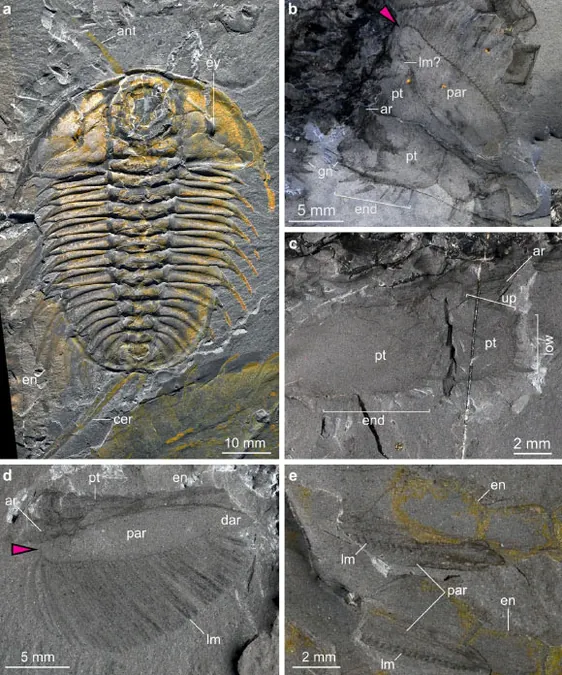
Unlocking the Mysteries of Burgess Shale Trilobites: A Deep Dive into Olenoides Serratus
2025-09-02
Author: Sarah
Ancient Secrets Unearthed
In a groundbreaking study, researchers have turned their attention to Olenoides serratus, a fascinating trilobite species from the Cambrian Burgess Shale, renowned for its well-preserved fossils dating back 539 to 487 million years. This research sheds light on the complex anatomy and ecological roles of these ancient arthropods, revealing insights that could change our understanding of early marine life.
Exceptional Fossil Preservation
The Burgess Shale in British Columbia is celebrated for its remarkable preservation of soft tissues in fossils. Unlike many other species, trilobites like Olenoides serratus are often only represented through their hard exoskeletons, leaving significant gaps in our understanding of their appendages. However, thanks to the abundance of well-preserved specimens, researchers can explore the functional morphology of these ancient creatures in unprecedented detail.
A Unique Opportunity
Paleontologist Dr. Sarah Losso and her team analyzed 156 limbs from 28 fossil specimens of Olenoides serratus. Their goal? To decode its locomotion and behavioral patterns. As Dr. Losso states, “Understanding fossils’ behavior is challenging because we can't observe them like living animals.
This new research promises to bridge the gap between ancient marine ecosystems and modern understanding.
Comparing with Modern Relatives
To elucidate the movement of Olenoides, the researchers compared its limbs to those of living horseshoe crabs, a distant relative that thrives along the North American coast. Despite their superficial similarities, their limb structure revealed striking differences.
Surprising Findings About Mobility
Unlike the more specialized limbs of horseshoe crabs, which are adept for feeding and defense, Olenoides serratus displayed a simpler, yet effective structure. Its limbs facilitated movement for walking, burrowing, and even feeding. Surprisingly, the study revealed that males had specialized appendages for mating, along with gills for respiration—features previously unknown!
Creative Reconstruction Techniques
To visualize these findings, scientists employed advanced 3D digital modeling technologies, recreating the limbs based on angles from numerous fossil images. This was no easy feat, as fossilized remains are often flattened and distorted. But with meticulous attention to detail and comparisons with similar fossils, the researchers breathed life into these ancient creatures.
Implications for Future Research
The discoveries surrounding Olenoides serratus not only enhance our understanding of trilobite behavior but also contribute to our broader knowledge of early arthropod evolution. By deciphering the movements and ecological roles of such ancient beings, we're gaining invaluable insights into the dynamics of life on Earth millions of years ago.
Published Findings
These fascinating results were published on August 4, 2025, in BMC Biology, marking a significant step forward in paleontological studies and our comprehension of ancient life forms.


 Brasil (PT)
Brasil (PT)
 Canada (EN)
Canada (EN)
 Chile (ES)
Chile (ES)
 Česko (CS)
Česko (CS)
 대한민국 (KO)
대한민국 (KO)
 España (ES)
España (ES)
 France (FR)
France (FR)
 Hong Kong (EN)
Hong Kong (EN)
 Italia (IT)
Italia (IT)
 日本 (JA)
日本 (JA)
 Magyarország (HU)
Magyarország (HU)
 Norge (NO)
Norge (NO)
 Polska (PL)
Polska (PL)
 Schweiz (DE)
Schweiz (DE)
 Singapore (EN)
Singapore (EN)
 Sverige (SV)
Sverige (SV)
 Suomi (FI)
Suomi (FI)
 Türkiye (TR)
Türkiye (TR)
 الإمارات العربية المتحدة (AR)
الإمارات العربية المتحدة (AR)